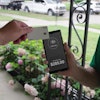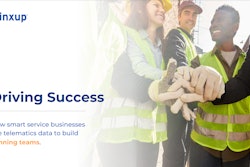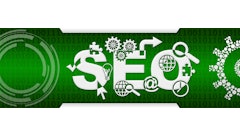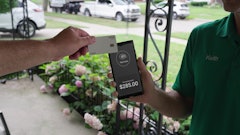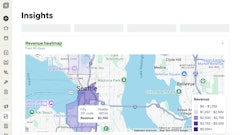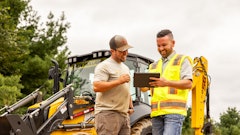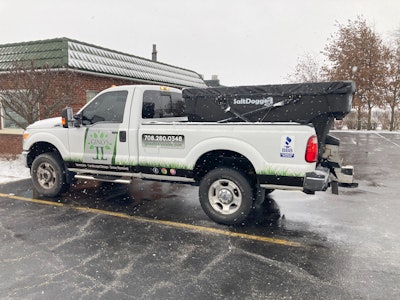
Picture this: Your landscape maintenance company is running several crews spread out over different sites across the city. One crew texted that they can’t quite find the right location. Another messaged that their truck is in need of an oil change. And a third reached out to say they don’t think they’ll get to everyone on the day’s schedule due to a route miscommunication.
That’s where a telematics system comes into play.
“If you’re going to grow, you need it,” says Gino Fanello, owner, CEO and president of Gino’s L&L Service in Peotone, Illinois. “The biggest thing is peace of mind. It shouldn’t be a trust issue with your crew. Everyone in the crew should be aware they’re for security reasons and for production time reasons and to help manage everyone, so everybody’s on the same page.”
Fanello, whose company uses Linxup, and Jeff Heller, president of Innovative Maintenance Solutions in Indianapolis, whose company uses Timeero, lay out how telematics systems have benefitted their companies.
Why implement?
Gino’s L&L Service incorporated Linxup about three seasons ago when it realized it needed a way to know where crews were.
“How could you manage people when you don't know where they're at?” Fanello says. “I didn’t want to have to be always texting and calling asking where they’re at and how long they have.”
The biggest benefit, Fanello says, has been garnering production times by seeing how long crews have been at a site.
“It's been very beneficial that I can see how long a lawn takes to make sure that we're priced accordingly,” Fanello says.
Gino’s L&L Service also uses it to determine when certain vehicles may need preventive maintenance, such as an oil change.
“We still have our manual logs in the shop that we use, but this helps with the systems we’re trying to keep in place so everything runs smoothly,” Fanello says.
Innovative Maintenance Solutions implemented Timeero five years ago for similar reasons.
“As landscapers and even as snow contractors, we’ve seen it be harder and harder to maintain acceptable margins in the business,” Heller says. “We needed to find a way where we could better manage costs. Instituting that was a relatively inexpensive way to be able to accomplish all of that with the side benefit of being able to show our insurance company the driving records, which has lowered our insurance costs as well.”
Heller adds that it’s made scheduling dispatch a lot easier.
“We were able to avoid overlapping schedules, and we were able to quickly adjust schedules to accommodate for other unforeseen events like weather, illness or a crew member being out,” Heller says.
While Heller says crews were initially hesitant about the technology for fear of it acting like “Big Brother,” they came around to the idea when the company talked to them about exactly why they were using it.
“There was a conversation with them, and they were worried about being tracked and micromanaged, but they figured out pretty quickly that wasn’t our aim,” Heller says. “It was actually to increase efficiencies and ultimately help them do their jobs better.”
How to onboard
As far as onboarding the system, Fanello says there were relatively few learning curves.
“They just sent it, we plug it right in and registered on the app,” Fanello says. “We’re pretty much good to go from there. It was very simple.”
Heller notes that any potential roadblocks were easily navigated through the technical help and training that came from the provider.
“It was a relatively easy system to pick up and use primarily because everything was geared to landscapers to begin with,” Heller says, adding that one of the main items the company looked for in onboarding a system was a provider that had experience in the landscape industry.
For other business looking to incorporate telematics into their operations, Fanello recommends landscape pros look into it sooner rather than later.
“If you’re trying to be in a managerial position and send those crews out, it’s going to give you peace of mind and help you manage those crews much more efficiently,” Fanello says.
Heller recommends asking providers for a demo of the product.
“I think that that will lay a lot of fears for people that are worried about cost or implementation,” Heller says. “I would suggest others to do it for the cost savings and operational efficiencies that will translate to a much better bottom line.”



